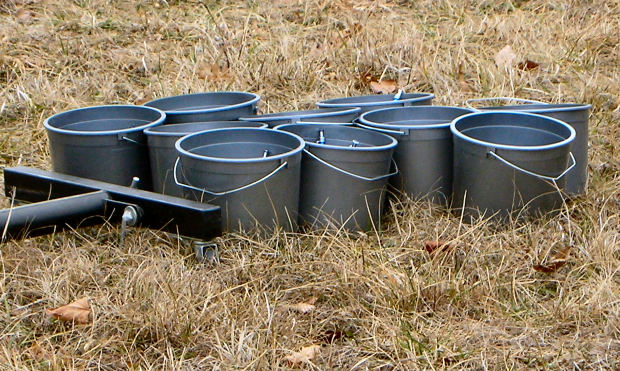 Loading... Please wait...
Loading... Please wait...Save Money. Grow Your Own!
Fast Plain Box Shipping.
We ship to the US & Canada.
Grow Your Own!
DIY 5-Gallon Potato bucket explained
Posted on 10th May 2015
One of the many innovative ideas out there for hydroponics involves a simple 5 gallon bucket. Here's how some growers are creating these types of systems to give themselves a boost growing fresh foods at home or in a business space.
The do-it-yourself 5 gallon bucket system starts with a 5 gallon bucket. You won’t have to poke any holes in the actual pocket, unless you want to route tubing through the bottom. What you do need to do is buy irrigation tubing and a reservoir system that sits somewhere outside of the bucket system.

Attaching Irrigation Tubes
When you have a reservoir and a pump system, your irrigation tubes can be routed around the top of the bucket, through the side, or through the bottom. You have to make sure the pump has a good enough rating to get the water in and out of the bucket periodically. Then you need to make sure that the reservoir is accessible to manage the nutrient mix and other aspects of plant development.
The Plant Tray System
Modern hydroponics retailers can sell you specific plant pot tops that fit a five gallon bucket. These plastic capsules sit on top of the bucket with plant roots securely held in a smaller pot in the center. The idea is that as the irrigation system pumps water into the bucket, it will saturate plant roots which are held in clay pallets or similar materials in the plant container.
Sit Back and Grow
By assembling this type of easy bucket system, you can get a working hydroponics environment in a small space and without a lot of extras. Lots of growers attach multiple buckets to one irrigation system. For instance, grow room areas might include tables of plants on buckets in rows, so that the grower can go along and maintain or harvest each one in sequence. In other multiple hydroponic gardens, the buckets are placed in rows on the floor.
Micromanaging Hydroponic Systems
There are many ways to set up these sorts of affordable and easy hydroponic systems. Lots of them rely on specific tools and equipment such as temperature and pH value monitoring equipment, pruning equipment, air and water handling equipment, and much more. For more on hydroponics and how to make your project work, take a look at what today's retailers can offer you to build a more stable and successful indoor or greenhouse garden.
